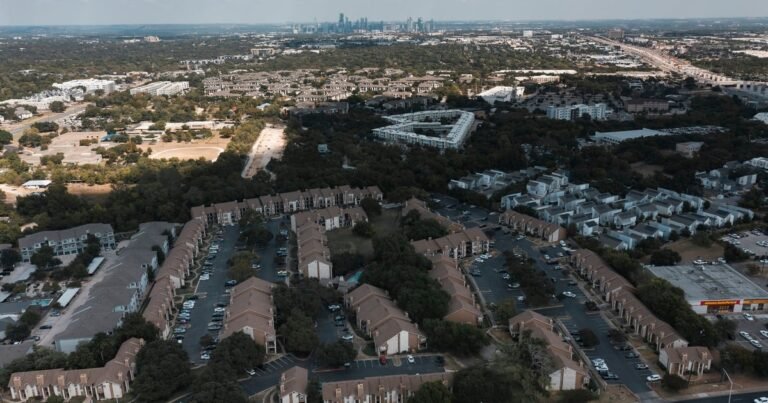Register for The Y’ all– an once a week send off concerning individuals, locations and plans specifying Texas, generated by Texas Tribune reporters staying in areas throughout the state.
DALLAS– Austin leas increased throughout the COVID-19 pandemic as 10s of hundreds of brand-new citizens crowded there and the area’s task market grew.
Currently, Austin is just one of the only significant united state cities where leas are dropping.
Austin leas have actually toppled for 19 straight months, information from Zillow reveal. The normal asking rental fee in the funding city rested at $1,645 since December, according to Zillow– over where leas stood before the pandemic however listed below where they came to a head in the middle of the area’s heated development.
Bordering residential areas like Round Rock, Pflugerville and Georgetown, which saw leas expand by double-digit percents in the middle of the area’s pandemic boom, likewise have actually seen decreasing leas. Leas aren’t dropping as rapidly as they increased throughout the pandemic run-up in expenses, however there are couple of locations in the Austin area where leas really did not drop at some point in the in 2014.
The primary factor behind Austin’s dropping leas, realty specialists and real estate supporters claimed, is an enormous apartment boom unequaled by any kind of various other significant city in Texas or in the remainder of the nation. Apartment or condo building contractors in the Austin location kicked right into overdrive throughout the pandemic, causing 10s of hundreds of brand-new homes striking the marketplace.
Generally, building contractors in the area acquired structure authorizations for 957 homes for every single 100,000 citizens in between 2021 and 2023, a Texas Tribune evaluation of Demographics information programs– much surpassing the nation’s various other significant urbane areas. Amongst Texas’ significant cities, the San Antonio-New Braunfels area came closest with 346 brand-new homes allowed per every 100,000 individuals throughout that very same duration.
That boom caused component as a result of a changing political society around brand-new real estate, Austin Common council Participant José “Chito” Vela claimed.
As in several various other significant cities, existing home owners and community teams that opposed permitting even more homes to be constructed for years held substantial guide at Austin Municipal government. Yet those pressures shed support in the middle of the city’s escalating real estate expenses throughout the pandemic. Austin citizens chose Common council participants– consisting of Vela– even more pleasant to real estate advancement.
” We were functioning under the property for a number of years below in Austin that if we did not permit brand-new building and construction, that would certainly assist protect communities and hold back expenses,” Vela claimed. “That has actually simply been fairly revealed to be incorrect, which the in contrast strategy holds true.”
Amid enhanced competitors, proprietors combat to draw in brand-new occupants and maintain the ones they have. That suggests maintaining leas level or reducing leas to persuade existing occupants to restore their lease. For brand-new occupants, it suggests proprietors might supply a number of months’ well worth of totally free rental fee in order to persuade them to relocate.
That competitors has actually sustained decreasing leas throughout the marketplace, numbers from the company MRI ApartmentData program. New homes and older, less costly homes alike have actually seen leas drop within the in 2014.
” When you present that several brand-new homes, your leasing prices go down because of competitors,” claimed Cindi Reed, the company’s supervisor. “Supply and need.”
One outcome of the city’s dropping leas: Austin’s no more Texas’ most costly significant city for tenants. The area’s populace and task development reduced as apartment removed. As Ft Well worth surpassed Austin to come to be the state’s fourth-largest city, its leas exceeded Austin’s, also.
San Antonio, Dallas and Plano have actually likewise seen decreasing leas– however they have not dropped as quick as in Austin.
Though leas have actually dipped, the Austin area’s real estate expenses continue to be high. It’s uncertain for how long the descending fad in Austin leas will certainly last. While virtually 17,000 homes are incomplete, according to MRI information, building contractors have actually drawn back on brand-new tasks in the middle of the excess.
Austin leas rest concerning 17% over pre-pandemic degrees, Zillow numbers reveal. Almost fifty percent of the Austin-Round Rock area’s tenants are “cost-burdened,” according to a record in 2014 released by Harvard College’s Joint Facility for Real estate Researches– implying that they invest greater than 30% of their earnings on rental fee and energies, leaving much less cash in their pockets to invest in various other vital requirements like grocery stores, clothing and transport.
Of those families, nearly a quarter placed a minimum of fifty percent of their earnings towards rental fee and energies, implying they are “badly” cost-burdened.
” Cost has a technological meaning, and it’s paying 30% or much less of your earnings towards rental fee,” claimed Ben Martin, study supervisor for Texas Housers, a study and campaigning for team. “And for many individuals in Austin, that was not the instance prior to the pandemic, and it’s not the instance currently.”
Faced with high problems and home costs, it’s exceptionally hard for the normal family members to make the change to homeownership. Home costs in Austin have actually floated over $500,000 for time, making it virtually difficult for the normal family members to change to homeownership while continuing to be in city limitations. A prospective property buyer in the Austin location requires to make greater than $140,000 to manage a home at the mean prices, according to Harvard.
Indications are plentiful that citizens are battling with the area’s high real estate expenses. Landlords are submitting much more expulsions than they did prior to the COVID-19 pandemic, numbers from Expulsion Laboratory program. And the variety of individuals experiencing being homeless expanded in Austin in 2014, according to quotes launched in December by the United State Division of Real Estate and Urban Advancement.



